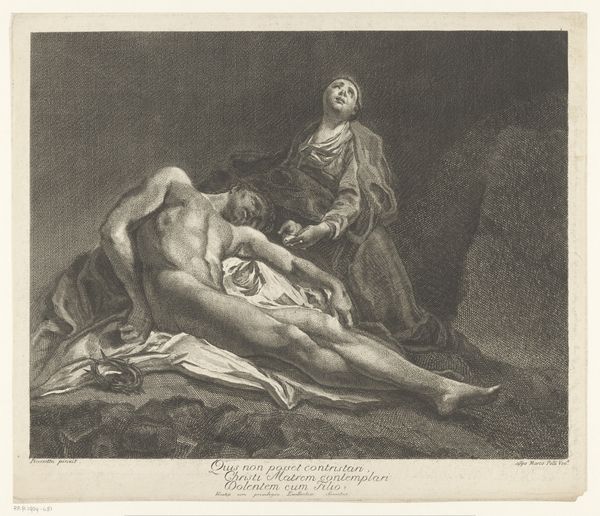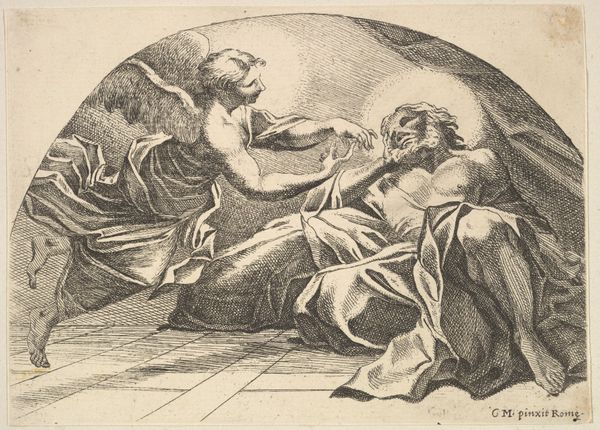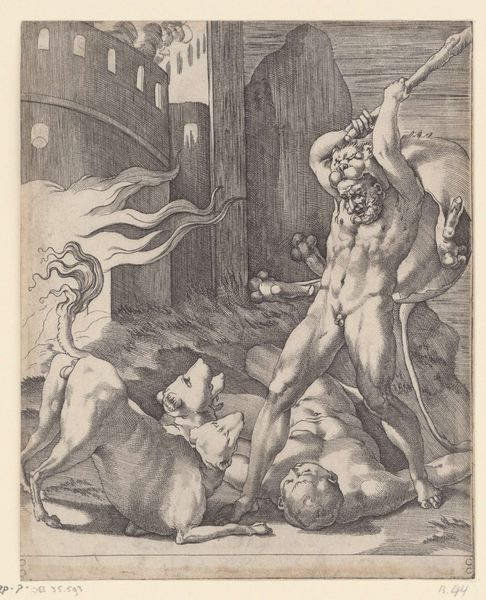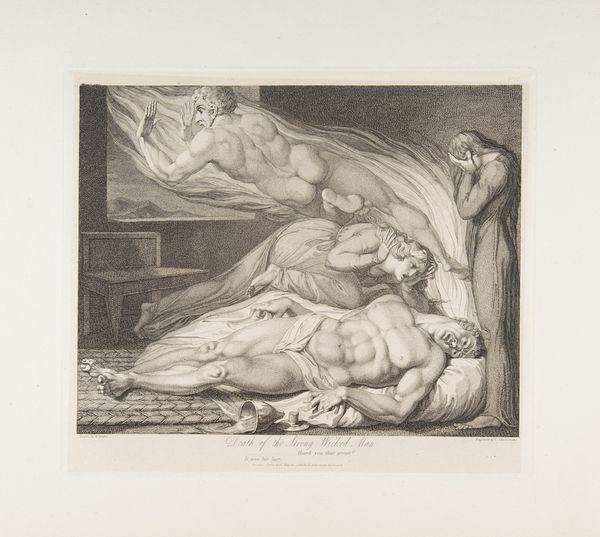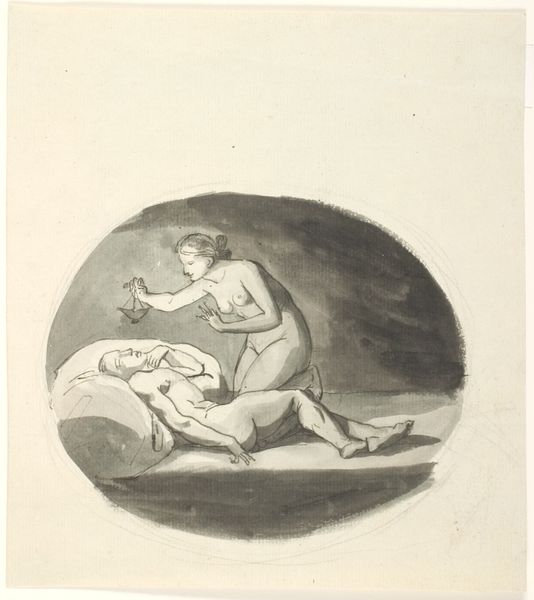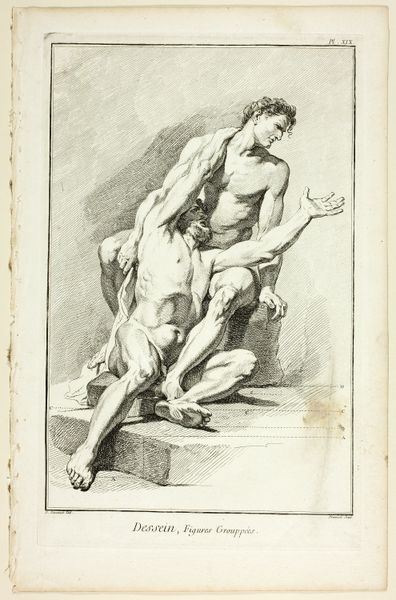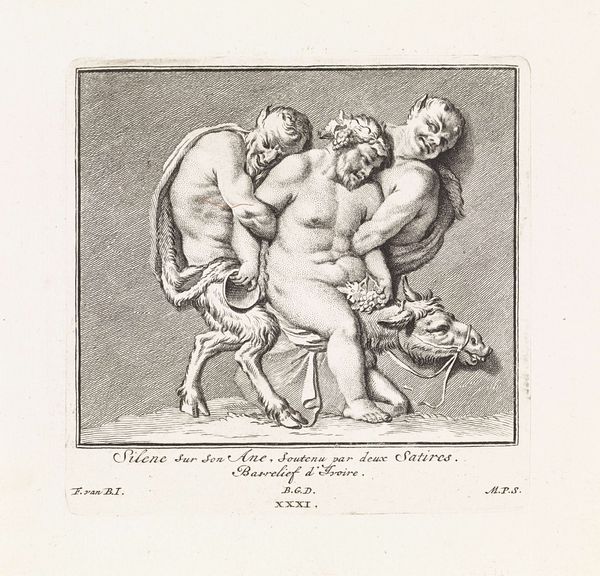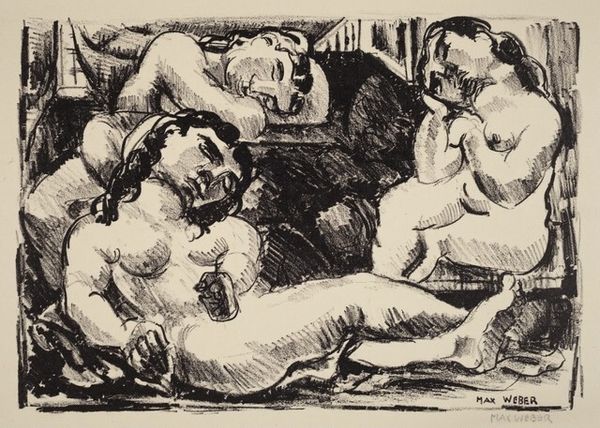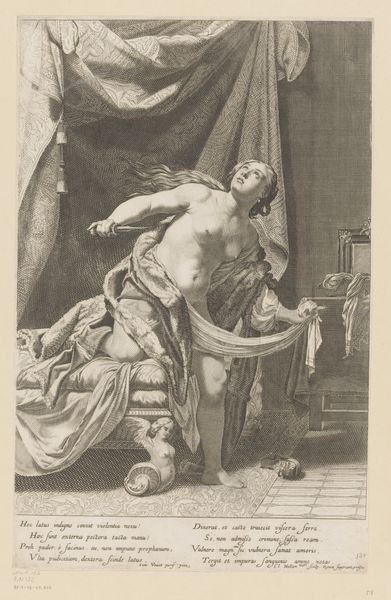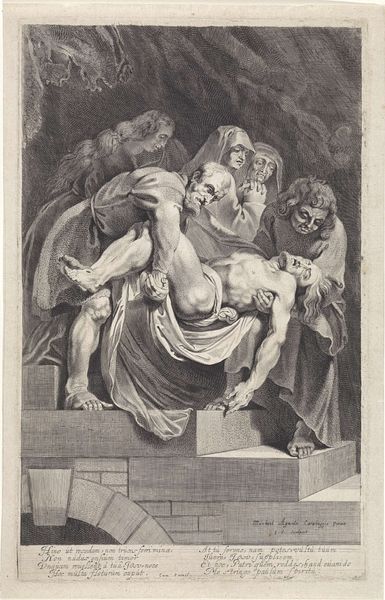
drawing, print, etching, paper
#
drawing
#
baroque
# print
#
etching
#
figuration
#
paper
#
france
#
academic-art
#
nude
Dimensions: 285 × 394 mm (plate); 335 × 480 mm (sheet)
Copyright: Public Domain
Editor: Here we have Carle van Loo’s "Figure, from Six Figures Académiques," dating from 1742-1743, created as an etching. I find the stark contrast and the somewhat… theatrical pose of the figures rather striking. What do you make of this piece? Curator: Well, seen through a historical lens, it reveals quite a bit about artistic training and the social role of art at the time. This etching is part of a series intended for academic study, reflecting the French Academy’s emphasis on mastering the human form through rigorous life drawing. Notice how the dramatic lighting emphasizes anatomical accuracy. It's not just aesthetics, but an exercise in understanding and portraying the ideal, classical body. Consider, who was the intended audience and what purpose did this print serve? Editor: So it's less about artistic expression and more about standardized learning? Almost like a textbook image? Curator: Precisely! Think about the institutions that upheld these artistic standards. The Academy shaped artistic taste and determined what was considered "good" art. Prints like these circulated widely, reinforcing their authority and spreading a specific visual language. In many ways it limited artistic creativity and freedom, as success within these institutions meant the backing of political figures and powerful cultural influences. How do you think this standardization affected artistic innovation during that period? Editor: That’s fascinating. It gives me a completely different perspective on academic art. I hadn’t considered the socio-political power structures at play in dictating what art was "good." Curator: Exactly! The politics of imagery were, and continue to be, ever-present. Now, when you look at it, can you discern the historical factors and recognize their impact? Editor: Definitely. It’s eye-opening to see this less as an isolated artwork and more as a product of its time, shaped by powerful institutions. Thank you.
Comments
No comments
Be the first to comment and join the conversation on the ultimate creative platform.
